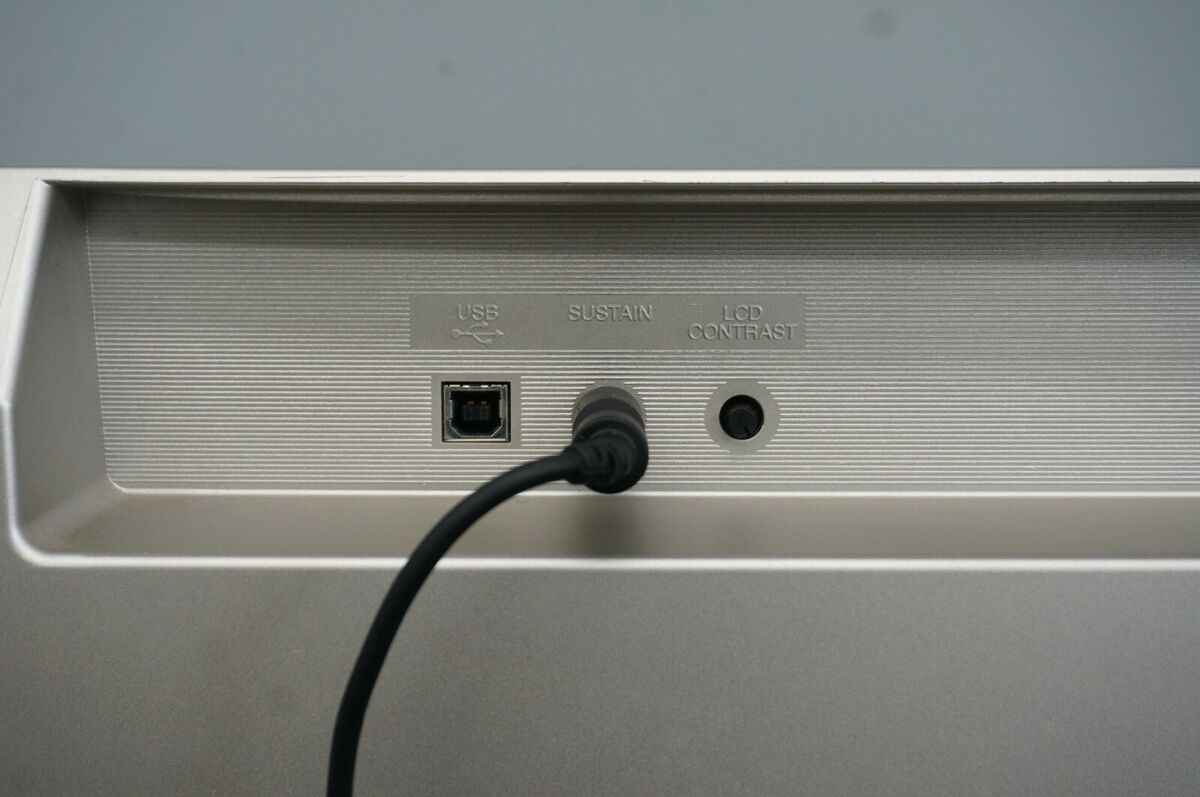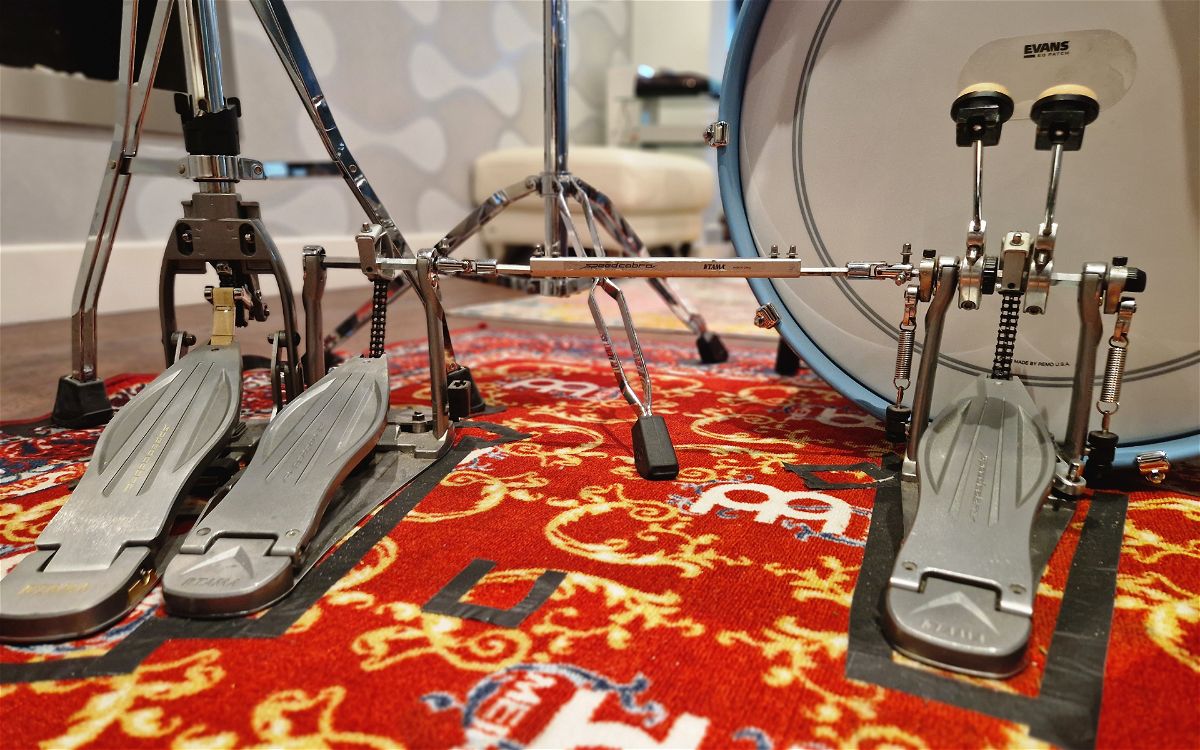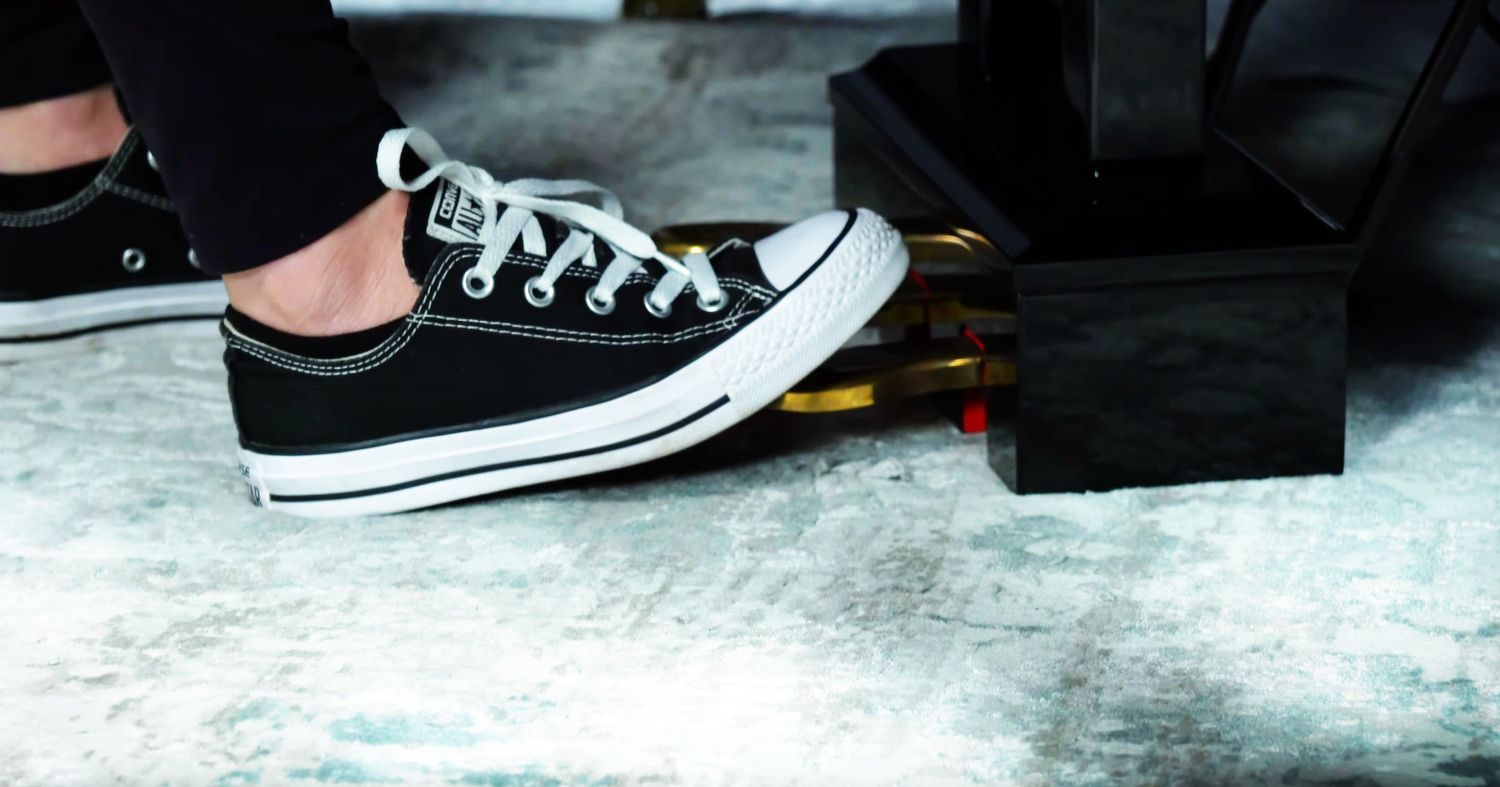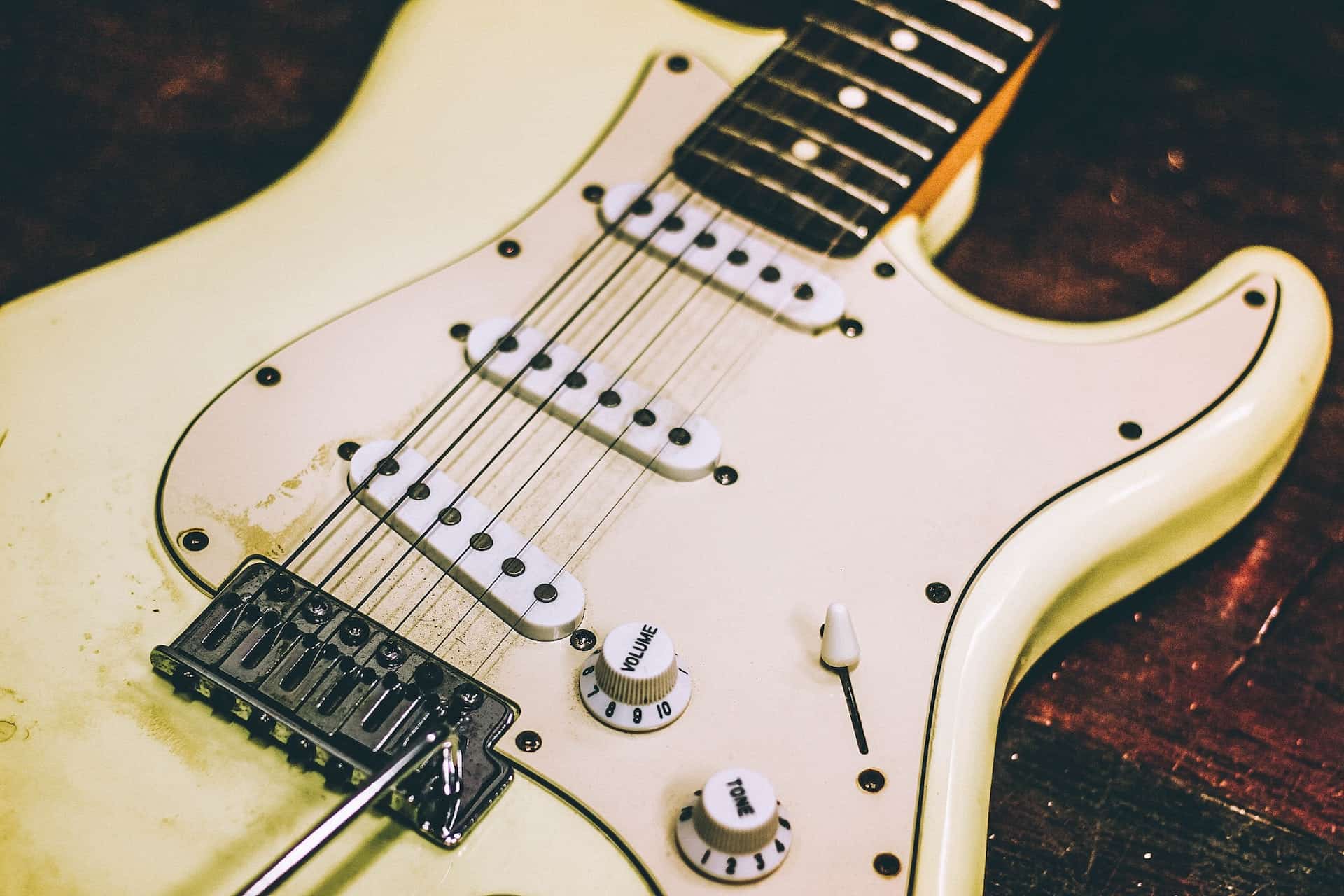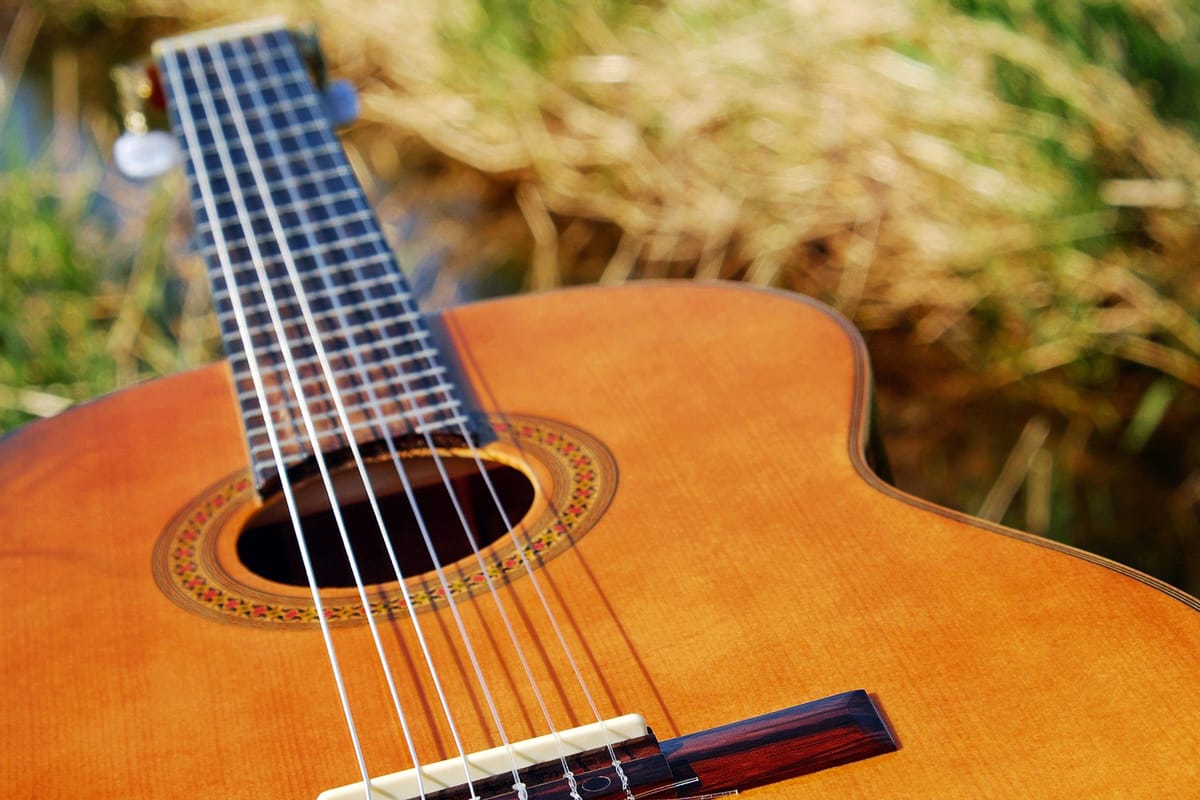Home>Instruments>Guitar>What Do Guitar Pedals Do
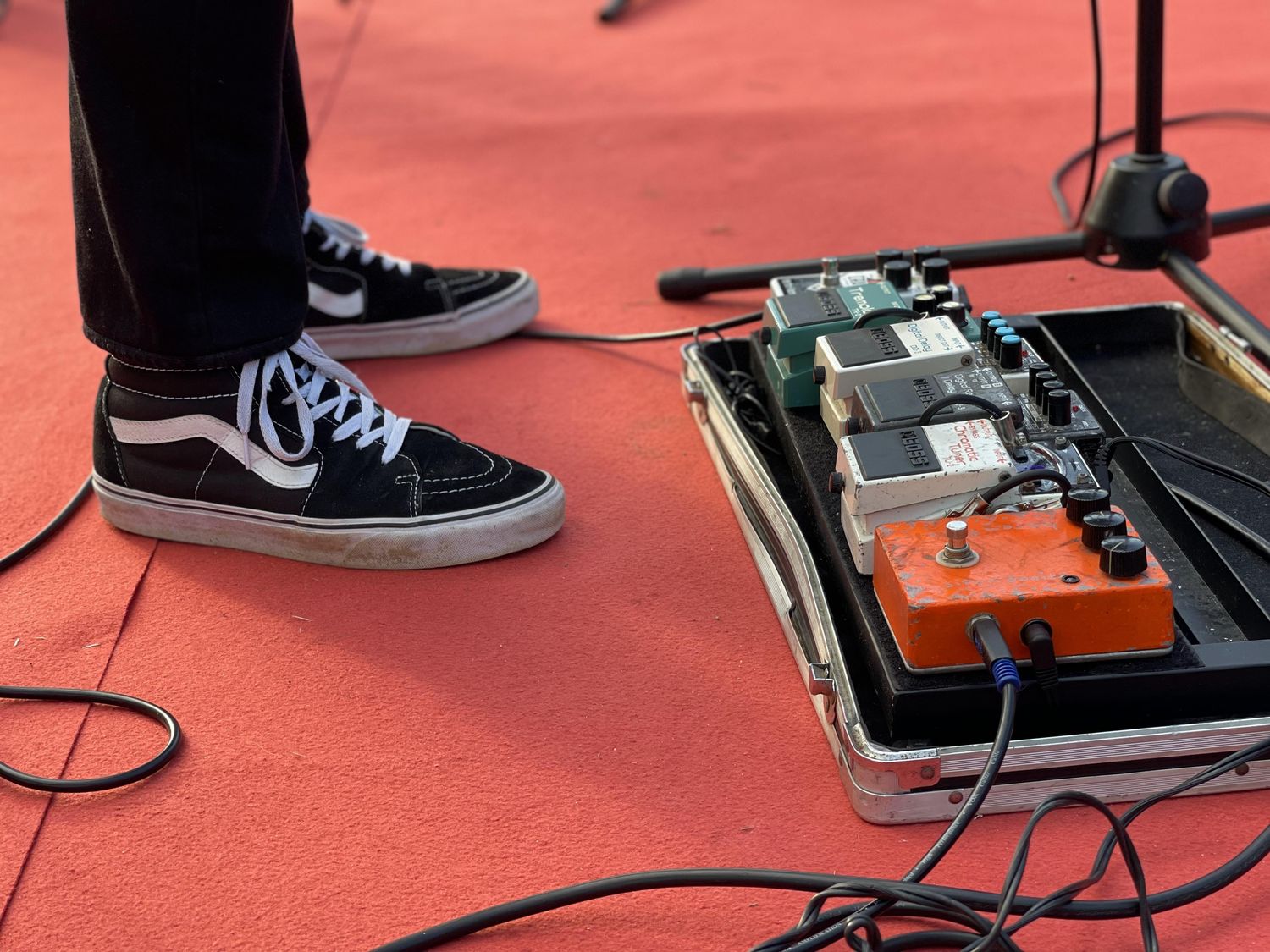

Guitar
What Do Guitar Pedals Do
Published: February 15, 2024
Discover how guitar pedals can enhance your sound and take your playing to the next level. Explore the different types and find the perfect pedal for your guitar setup. Unlock new tones and effects today!
(Many of the links in this article redirect to a specific reviewed product. Your purchase of these products through affiliate links helps to generate commission for AudioLover.com, at no extra cost. Learn more)
Table of Contents
What Do Guitar Pedals Do
Guitar pedals are the secret sauce of countless iconic guitar tones. They have the power to transform a plain, unadorned guitar signal into a kaleidoscope of sonic possibilities. Whether you're a seasoned guitarist or just starting out, understanding the function and potential of guitar pedals can significantly elevate your playing experience. In this article, we'll delve into the world of guitar pedals, exploring their various types, uses, and the magic they bring to your sound.
Guitar pedals, also known as stompboxes, are compact effects units that alter the sound of an electric guitar signal in myriad ways. From adding a touch of reverb to creating a swirling vortex of psychedelic fuzz, these small devices are capable of producing a vast array of tones and textures. They are typically arranged on a pedalboard, a flat board where multiple pedals are attached and organized to be easily activated by the guitarist's feet during a performance.
The allure of guitar pedals lies in their ability to shape and sculpt the raw sound of the guitar, allowing musicians to craft their own signature tones. Whether you're aiming for the soaring sustain of a lead solo, the haunting wail of a bluesy riff, or the ethereal shimmer of ambient chords, there's a pedal (or combination of pedals) to help you achieve your sonic vision.
As we journey through this article, we'll explore the different types of guitar pedals, how they function, and the diverse effects they can produce. Additionally, we'll offer practical tips for using guitar pedals effectively and creatively. By the end, you'll have a deeper understanding of these sonic tools and how they can unlock new dimensions of musical expression. So, buckle up and get ready to embark on a captivating exploration of the captivating world of guitar pedals!
What Are Guitar Pedals?
Guitar pedals, also known as effects pedals or stompboxes, are compact electronic devices that alter the sound of an electric guitar signal. These pedals are designed to create a wide range of audio effects, allowing guitarists to customize their sound with precision and creativity. Each pedal is dedicated to producing a specific effect, such as distortion, delay, modulation, or reverb, and can be activated or deactivated by the guitarist’s foot, hence the term “stompbox.”
At their core, guitar pedals function as signal processors, modifying the audio signal from the guitar before it reaches the amplifier. This modification can involve anything from adding a touch of echo to completely transforming the timbre and character of the sound. With the simple stomp of a foot, a guitarist can seamlessly introduce these effects into their playing, enhancing their performance with an array of expressive tonal colors.
One of the defining features of guitar pedals is their versatility. Whether you’re aiming to emulate the gritty overdrive of a cranked tube amp, conjure the lush ambience of a cathedral-like reverb, or create otherworldly sounds that push the boundaries of conventional guitar tones, there’s a pedal designed to fulfill your sonic aspirations. The sheer diversity of available pedals empowers guitarists to craft a sonic identity that is uniquely their own.
Furthermore, the compact nature of guitar pedals makes them highly portable and adaptable, allowing musicians to easily transport and integrate them into various performance setups. Whether you’re playing in a small club, a large stadium, or your own bedroom, these pedals remain an indispensable tool for shaping your guitar tone to suit the mood and style of your music.
Overall, guitar pedals are indispensable tools for guitarists seeking to expand their sonic palette and create captivating, dynamic performances. They offer a gateway to a world of sonic exploration, enabling musicians to unleash their creativity and expressiveness through a diverse range of effects and textures. In the next section, we’ll delve into the various types of guitar pedals and the unique sonic possibilities they offer.
Types of Guitar Pedals
Guitar pedals come in a variety of types, each offering distinct sonic transformations that cater to different musical styles and preferences. Understanding the characteristics and capabilities of each pedal type is crucial for harnessing their full potential and crafting captivating guitar tones. Let’s explore some of the most common types of guitar pedals:
- Overdrive and Distortion Pedals: These pedals are designed to add grit, crunch, and sustain to the guitar signal, effectively simulating the sound of an overdriven tube amplifier. Overdrive pedals produce a smooth, bluesy breakup, while distortion pedals deliver a more aggressive, heavily saturated tone, ideal for hard rock and metal genres.
- Delay Pedals: Delay pedals create echoes of the guitar signal, producing a sense of spaciousness and depth. From subtle slap-back echoes to ambient, ethereal repeats, delay pedals offer a versatile palette of rhythmic and atmospheric effects.
- Reverb Pedals: Reverb pedals replicate the acoustics of different environments, adding lush, enveloping reverberations to the guitar sound. From intimate room reverbs to expansive hall-like ambience, these pedals infuse the guitar tone with a sense of space and dimension.
- Modulation Pedals: Modulation pedals, including chorus, phaser, and flanger, introduce dynamic variations to the guitar signal, creating swirling, undulating textures that enhance the overall depth and movement of the sound.
- Wah and Filter Pedals: Wah pedals and filter pedals alter the frequency response of the guitar signal, allowing the guitarist to shape the tone with expressive, vowel-like sounds. These pedals are often manipulated by rocking a pedal back and forth to achieve vowel-like effects.
- Compression Pedals: Compression pedals even out the dynamics of the guitar signal, enhancing sustain and providing a consistent, smooth sound. They are particularly beneficial for achieving a balanced and polished tone, especially in genres such as funk and country.
Each type of pedal offers a unique sonic fingerprint, providing guitarists with a rich tapestry of tonal possibilities to explore. By combining and layering these pedals, musicians can craft intricate soundscapes and evoke a wide range of emotions through their playing. In the next section, we’ll uncover the inner workings of guitar pedals and how they interact with the guitar signal to produce these captivating effects.
How Do Guitar Pedals Work?
Guitar pedals operate by manipulating the electrical signal from the guitar before it reaches the amplifier, introducing various audio effects that shape the tonal characteristics of the instrument. Understanding the inner workings of these pedals provides insight into how they alter the sound and contribute to the overall sonic landscape. Let’s take a closer look at the fundamental principles behind the operation of guitar pedals.
At the core of a guitar pedal lies a circuit that processes the incoming audio signal. When the pedal is engaged, the signal is routed through this circuit, where it undergoes the desired effect processing, such as distortion, modulation, delay, or filtering. Each type of pedal contains specific components and circuitry tailored to its intended function. For example, distortion pedals incorporate clipping diodes and op-amps to produce the characteristic overdriven sound, while delay pedals utilize digital or analog circuitry to create echoes and repeats.
Upon processing the signal, the altered audio is then passed through the output stage of the pedal and sent to the amplifier, where the modified sound is amplified and projected through the speaker. The seamless integration of these pedals into the signal chain allows guitarists to effortlessly introduce captivating effects into their playing, adding depth, texture, and expressiveness to their performances.
The control interface of a guitar pedal typically includes knobs, switches, and expression pedals that enable the guitarist to adjust parameters such as effect intensity, speed, depth, and tone. These controls provide a hands-on approach to shaping the sound in real time, allowing for on-the-fly adjustments and personalized customization of the effect’s characteristics.
It’s important to note that the order in which pedals are arranged on a pedalboard can significantly impact the overall sound. For instance, placing a distortion pedal before a delay pedal will result in a different sonic outcome compared to placing the delay before the distortion. Understanding signal chain placement and pedal interaction is essential for optimizing the sonic potential of guitar pedals.
Ultimately, guitar pedals work harmoniously with the guitar and amplifier to expand the sonic palette available to the guitarist, offering a wide spectrum of tonal possibilities and creative expression. In the subsequent section, we’ll delve into the diverse effects produced by guitar pedals, showcasing their ability to transform the guitar’s voice into a multifaceted sonic tapestry.
Common Guitar Pedal Effects
Guitar pedals are renowned for their ability to produce a diverse array of effects, each contributing a unique sonic character to the instrument’s sound. These effects play a pivotal role in shaping the tonal identity of the guitar, adding depth, texture, and expressiveness to the music. Let’s explore some of the most common and influential effects generated by guitar pedals:
- Distortion: Distortion pedals introduce harmonic saturation and overdrive to the guitar signal, resulting in a gritty, aggressive tone that is synonymous with rock and metal genres. From classic rock crunch to modern high-gain aggression, distortion pedals offer a spectrum of saturated textures.
- Delay: Delay pedals create echoes and repeats of the guitar signal, enhancing the music with rhythmic patterns and ambient textures. Whether producing subtle slap-back echoes or expansive, atmospheric soundscapes, delay pedals add depth and dimension to the guitar’s voice.
- Reverb: Reverb pedals simulate the acoustics of different spaces, infusing the guitar sound with lush, enveloping reverberations. By emulating the ambience of concert halls, rooms, or plate reverbs, these pedals create a sense of spatial depth and immersion.
- Chorus: Chorus pedals generate a shimmering, doubled effect by modulating the pitch of the guitar signal, creating a rich, swirling texture reminiscent of multiple instruments playing in unison. This effect adds a captivating sheen to the guitar tone.
- Wah: Wah pedals alter the frequency response of the guitar signal, enabling expressive, vowel-like sounds to be produced by rocking the pedal back and forth. This effect is often associated with funky rhythm playing and emotive lead solos.
- Phaser: Phaser pedals produce a swirling, undulating effect by modulating the phase of the guitar signal, adding movement and depth to the sound. From subtle, watery textures to dramatic swooshing, phaser pedals offer a dynamic sonic palette.
- Compression: Compression pedals even out the dynamics of the guitar signal, providing a consistent, smooth sound with enhanced sustain. This effect is valuable for achieving a polished, studio-quality tone.
These effects represent just a fraction of the sonic possibilities that guitar pedals offer. By combining and layering these effects, guitarists can create captivating soundscapes that transcend traditional tonal boundaries, allowing for boundless creativity and sonic exploration. In the following section, we’ll provide valuable tips for using guitar pedals effectively and maximizing their potential in various musical contexts.
Tips for Using Guitar Pedals
Effectively harnessing the potential of guitar pedals involves not only understanding their technical aspects but also mastering the art of integrating them into musical performances. Here are some valuable tips to help guitarists make the most of their pedal setups and unleash the full creative potential of these sonic tools:
- Experiment with Signal Chain Order: The order in which pedals are arranged on the pedalboard can significantly impact the overall sound. Experiment with different signal chain configurations to discover unique tonal textures and find the most pleasing combinations of effects.
- Balance Effect Intensity: Adjust the intensity of each effect to complement the musical context. Subtle adjustments can make a significant difference in achieving the desired sonic impact without overpowering the original guitar tone.
- Utilize Tap Tempo Features: If using time-based effects such as delay or modulation, take advantage of pedals with tap tempo functionality to synchronize the effect timing with the music, ensuring rhythmic precision and cohesion.
- Engage Effect Trails: Some delay and reverb pedals offer the option to maintain the effect trail when the pedal is disengaged. This feature can create seamless transitions and enhance the overall sonic continuity during performances.
- Expressive Pedal Techniques: Explore expressive techniques when using pedals such as wah or volume pedals to infuse your playing with dynamic nuances and emotive qualities, adding a personal touch to your performances.
- Combine Effects Creatively: Experiment with layering and combining different effects to create unique sonic textures and atmospheres. By blending effects judiciously, you can craft captivating soundscapes that elevate your musical expression.
- Practice Active Listening: Develop a keen ear for how each effect shapes the guitar tone. Actively listen to the nuances and subtleties of the effects, allowing you to fine-tune your settings and achieve the desired sonic impact.
- Customize Presets and Settings: If using multi-function digital pedals, take advantage of preset customization to tailor your effects for specific songs or musical passages, streamlining your performance workflow.
- Consider the Venue and Sound System: Adapt your pedal settings to suit the acoustics of the performance venue and the characteristics of the sound system. Making these adjustments can ensure optimal sonic delivery in different environments.
- Embrace Creative Limitations: While the possibilities with guitar pedals are vast, embracing creative limitations can lead to innovative approaches. Explore the sonic potential of each pedal, pushing its capabilities to uncover new sonic territories.
By incorporating these tips into their musical journey, guitarists can elevate their performances and unlock boundless creative potential through the captivating world of guitar pedals. In the concluding section, we’ll reflect on the transformative impact of these pedals and their role in shaping the sonic landscape of modern music.
Conclusion
Guitar pedals stand as transformative tools that empower musicians to sculpt their sonic identities and express their creativity with boundless versatility. From the raw power of distortion to the ethereal allure of reverb, these compact devices have the power to shape the guitar’s voice in ways that transcend conventional tonal boundaries. As we’ve journeyed through this exploration of guitar pedals, we’ve uncovered the diverse types of effects they offer, their inner workings, and valuable tips for maximizing their potential.
At the heart of guitar pedals lies a world of sonic exploration, where musicians can weave intricate soundscapes and evoke a myriad of emotions through their playing. The ability to combine and layer effects, experiment with signal chain configurations, and utilize expressive techniques opens a gateway to endless sonic possibilities, allowing for the creation of captivating musical narratives.
Furthermore, the adaptability and portability of guitar pedals make them indispensable companions for musicians across diverse performance settings, from intimate studio sessions to expansive concert stages. Their seamless integration into the guitarist’s sonic arsenal enables the crafting of immersive sonic landscapes that captivate audiences and elevate musical experiences.
As we conclude this journey through the captivating world of guitar pedals, it’s evident that these sonic tools are not merely accessories but catalysts for sonic innovation and artistic expression. They empower guitarists to transcend traditional boundaries, forging new sonic frontiers and leaving an indelible imprint on the musical landscape.
So, whether you’re a seasoned guitarist seeking to expand your sonic palette or a budding musician eager to embark on a sonic odyssey, the realm of guitar pedals beckons with endless possibilities. Embrace the sonic tapestry they offer, harness their creative potential, and embark on a captivating journey of sonic discovery. Let the transformative power of guitar pedals inspire your musical endeavors and propel your artistry to new heights.

